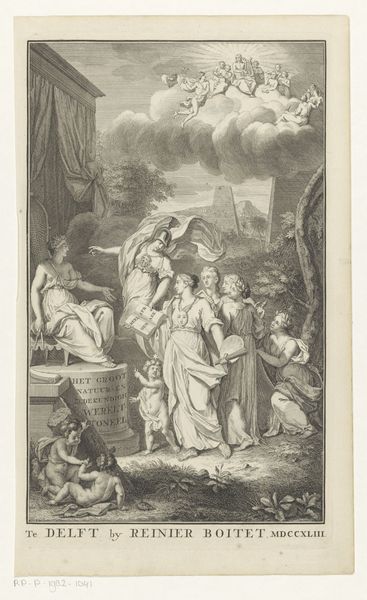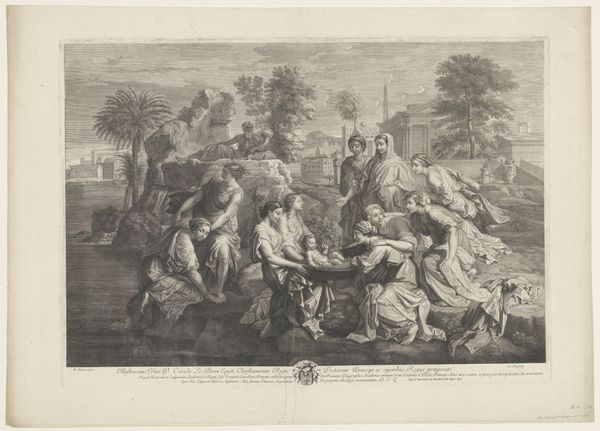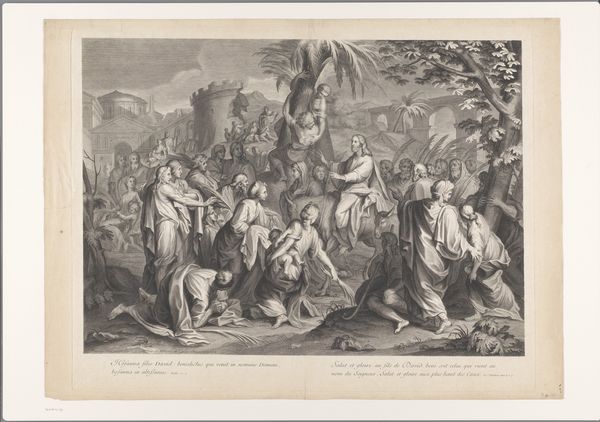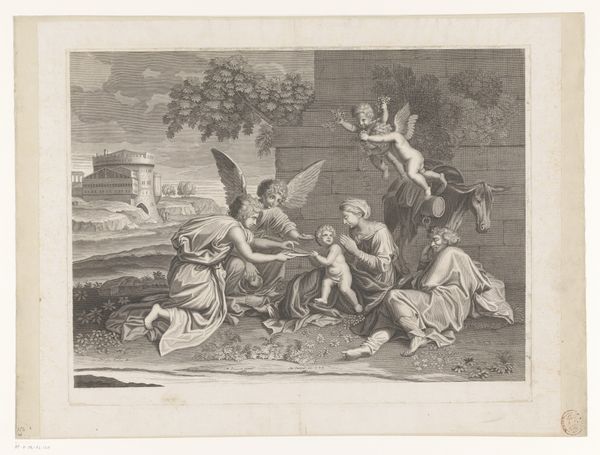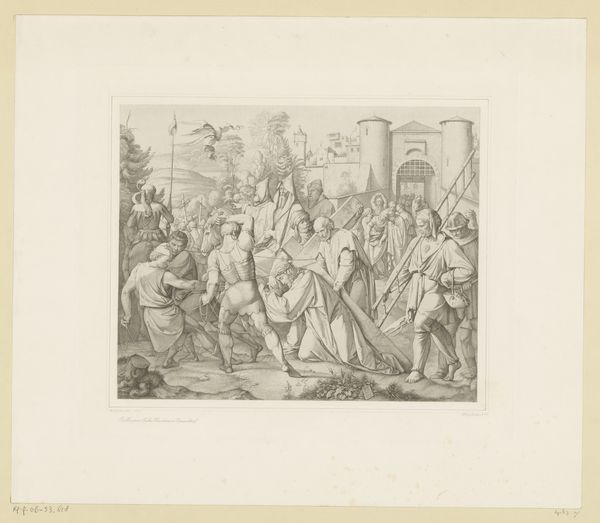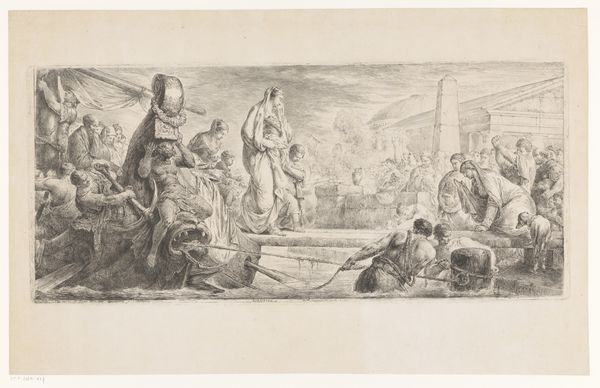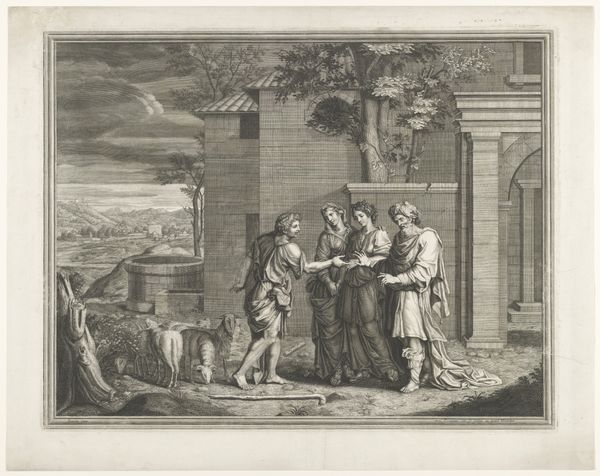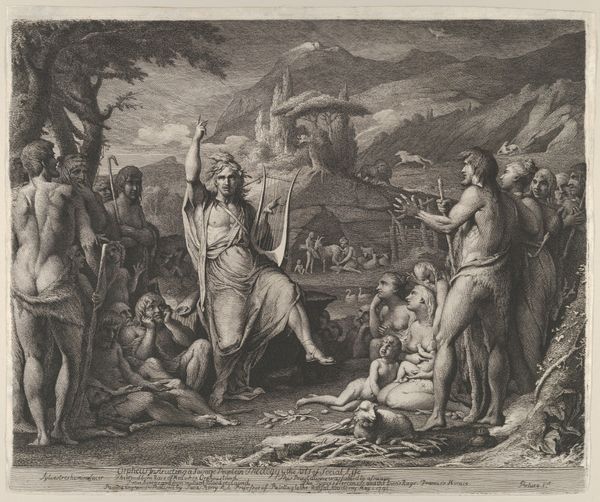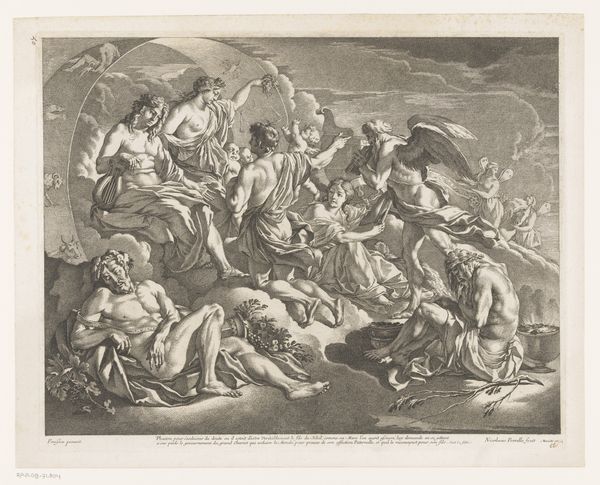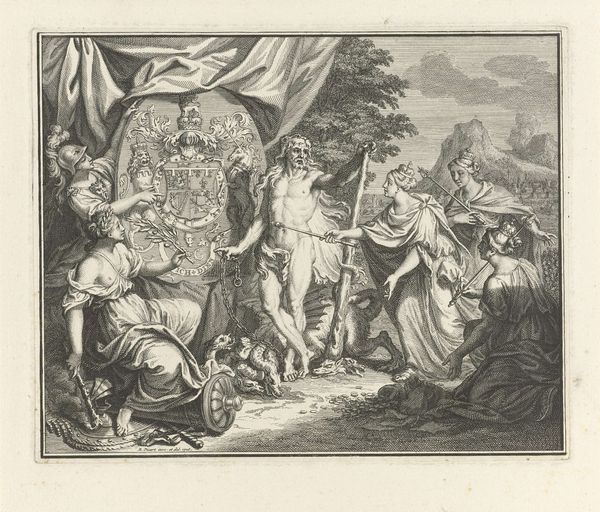
print, engraving
#
narrative-art
#
baroque
# print
#
figuration
#
history-painting
#
engraving
Dimensions: height 496 mm, width 682 mm
Copyright: Rijks Museum: Open Domain
Curator: This engraving, attributed to Antoine Trouvain, depicts “Moses Defending the Daughters of Jethro.” It likely dates between 1666 and 1708. It is held in the collection of the Rijksmuseum. Editor: My first impression? Dynamic! There’s a clear division. We see both violence and grace coexisting in this single, busy scene. It evokes a feeling of divine intervention. Curator: Indeed. Trouvain presents a familiar biblical narrative. The focus here is less about strict religious dogma, and more a depiction of moral order, especially in its original historical context. Editor: I see what you mean. Consider the water well as a prominent symbol: It signifies life, community, sustenance. Then you’ve got the shepherd figures who try to block the women access, essentially disrupting that lifeline. This visual antagonism, is, in a broader sense, challenging societal harmony. Curator: Exactly. Trouvain presents us with a layered interpretation, reflecting both biblical narrative and perhaps contemporary societal issues as well. The Baroque style heightens this, using a kind of idealized representation of conflict. Editor: The artist certainly captured an instant where intervention shifted fate. Moses stands centrally with an almost classical heroism. Note the figures reacting around him too – the daughters looking on with hopeful expectation. The act speaks powerfully through visual storytelling. Curator: This work, in its time, held significant public value through art. Engravings played a vital role, disseminating images widely through print culture. "Moses Defending the Daughters of Jethro," while referencing scripture, also navigated societal power dynamics. It reflected ideals for the public to aspire to, showcasing themes still discussed within society. Editor: The symbolic interplay allows one to view through the cultural lens of a time. It gives voice to ancient allegories which offer timeless reflections regarding power, defense, gender and hope. Curator: Analyzing "Moses Defending the Daughters of Jethro," illuminates how visual representation reinforced biblical narratives while commenting on the historical realities of Trouvain's era. Editor: The image provides timeless insight, reminding us about core human truths found in faith.
Comments
No comments
Be the first to comment and join the conversation on the ultimate creative platform.

